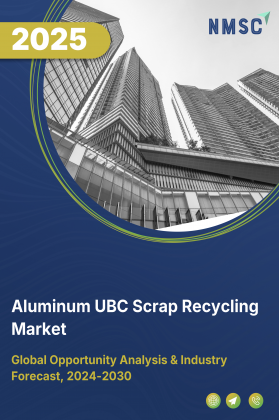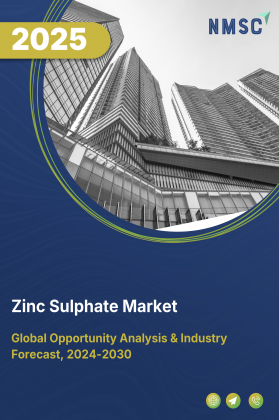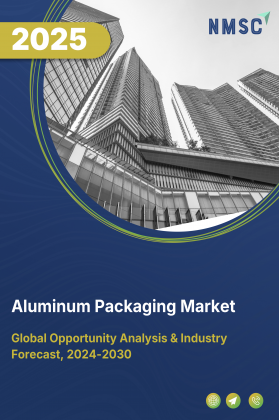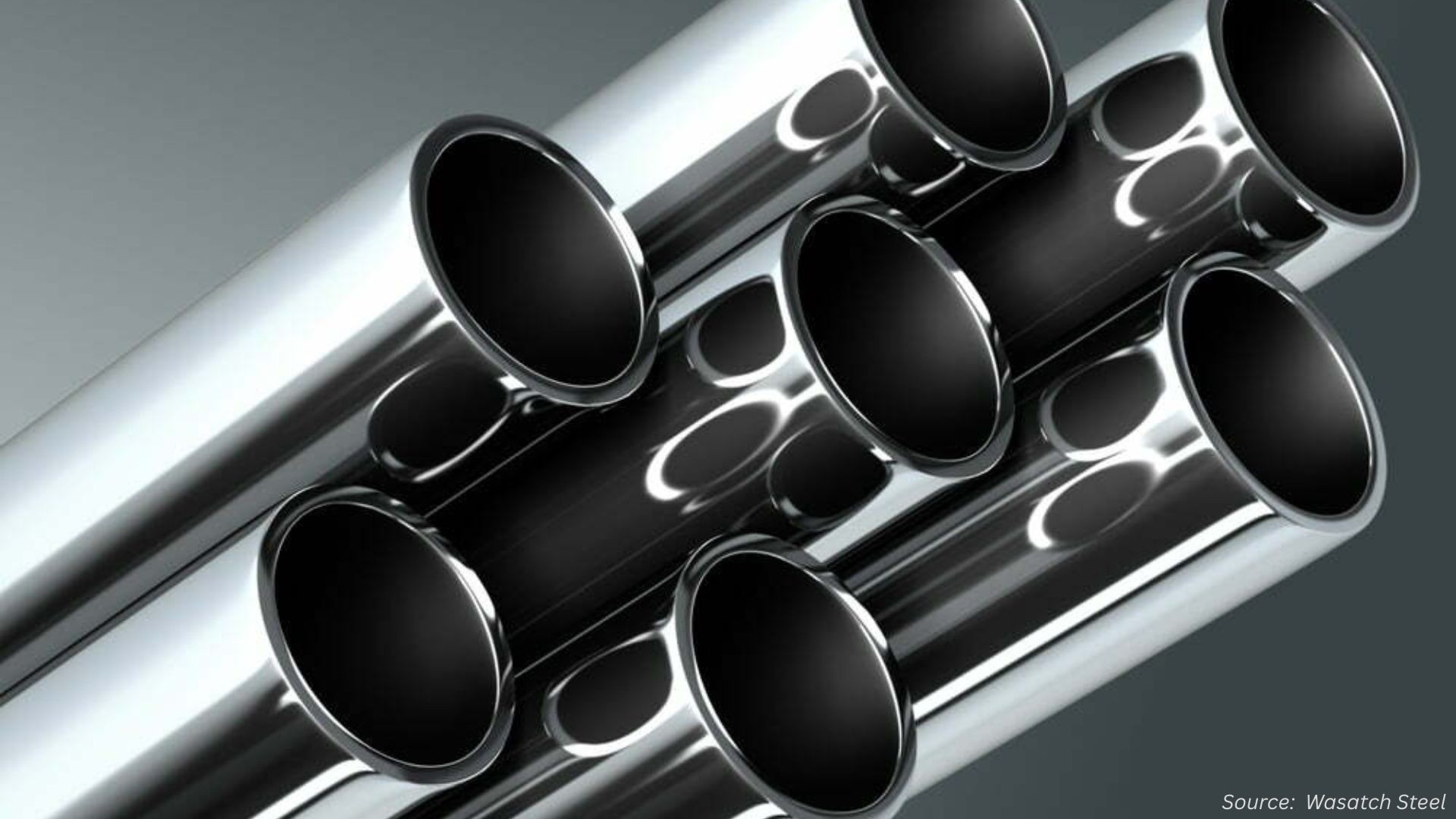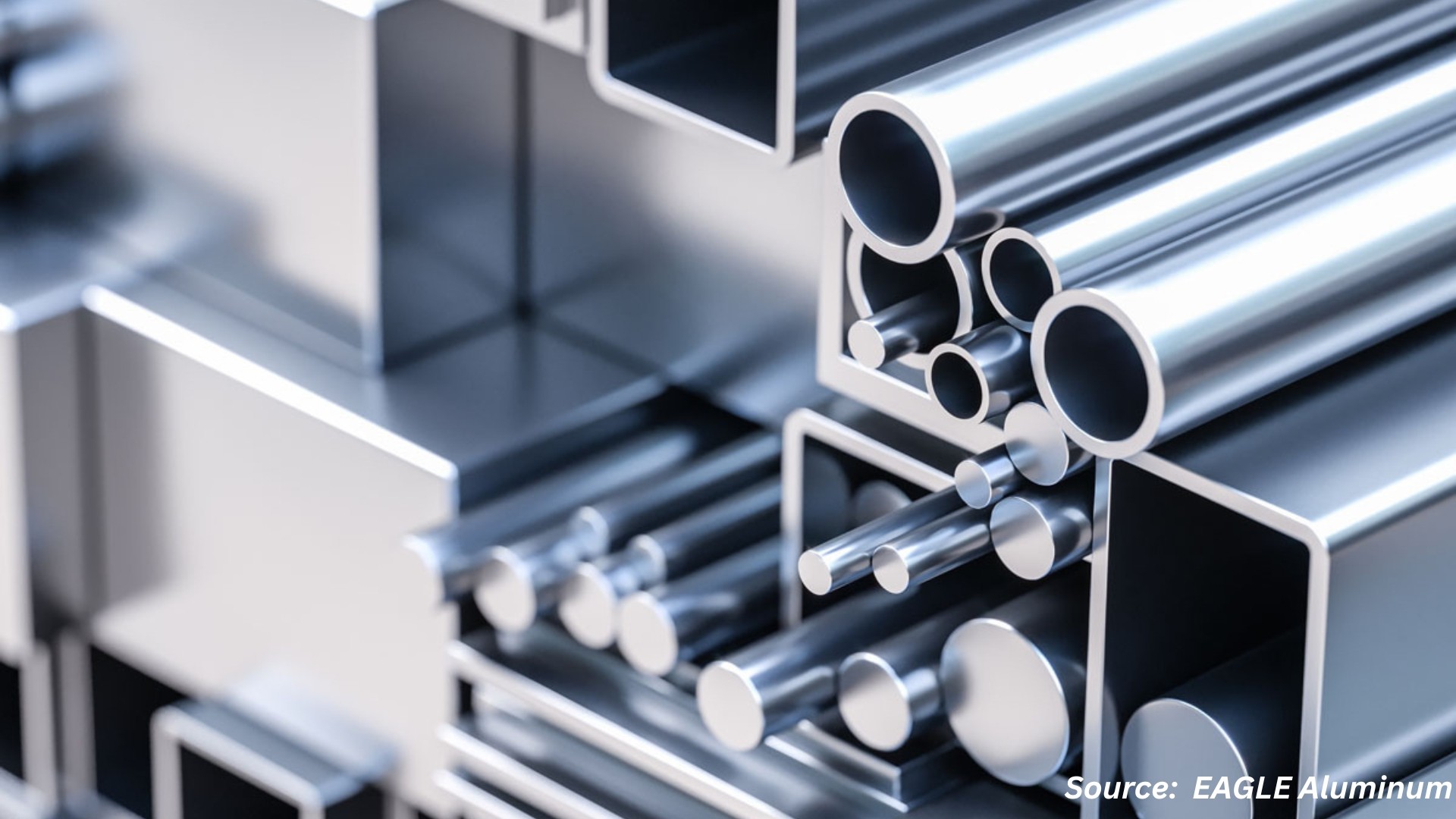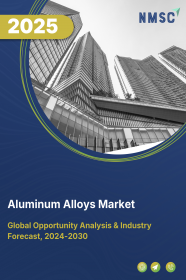
Aluminum Alloys Market by Alloy Type (Wrought, Cast, High-Strength, Lightweight, and Transparent), by Processing Method (Casting, Rolling, Extrusion, Forging, and 3D Printing), by Alloy Treatment (Heat-Treatable, Non-Heat-Treatable, Annealed, and Others), by Product Form (Sheets, Castings, Extrusions, and Others), and by End User (Automotive, Aerospace, Construction, Electrical & Electronics, Packaging, and Others) – Global Opportunity Analysis and Industry Forecast, 2025–2030
Industry Outlook
The global Aluminum Alloys Market size was valued at USD 198.19 billion in 2024 and is predicted to reach USD 211.40 billion by the end of 2025. The industry is expected to reach USD 285.58 billion by 2030 with a CAGR of 8.1% from 2025 to 2030.
The market is experiencing robust growth, driven by rising demand from key sectors such as electric vehicles, construction, and renewable energy. Automakers are increasingly adopting aluminum alloys to enhance EV performance through weight reduction, while the construction industry values their durability and corrosion resistance for sustainable infrastructure. Simultaneously, aluminum’s critical role in solar and wind energy systems is reinforcing its importance in the global clean energy transition.
However, high energy costs and regulatory pressures challenge market expansion. Innovations in additive manufacturing are creating fresh opportunities, with advanced aluminum alloys tailored for 3D printing gaining momentum across high-performance applications in aerospace, automotive, and medical industries.
Rising Demand in Electric Vehicle Production Fuels Market Growth
The rapid expansion of electric vehicle (EV) production is a key catalyst propelling growth in the market. As automakers seek to enhance vehicle efficiency and battery performance, aluminum alloys are increasingly preferred due to their lightweight characteristics, which help extend EV range by reducing overall vehicle weight.
According to the International Energy Agency, global electric car sales exceeded 17 million in 2024, making up more than 20% of total car sales, a clear indication of accelerating EV adoption. This surge in EV production is directly increasing demand for aluminum alloys used in components such as battery enclosures, chassis, and structural frames, as manufacturers prioritise both sustainability and high performance.
Growth in Construction Sector Applications Drives Market Expansion
The expanding use of aluminum alloys in the construction sector is playing a pivotal role in driving the growth of the market. Valued for their corrosion resistance, recyclability, and structural strength, aluminum alloys are increasingly utilised in applications such as facades, roofing, and structural frameworks, key elements in sustainable building design.
In 2024, U.S. construction spending rose to USD 2.1 trillion, marking a 6.5% increase from the previous year, according to the U.S. Census Bureau. This uptick mirrors a broader global push toward urbanisation and large-scale infrastructure development, particularly in emerging economies.
For instance, as per IBEF, India’s Interim Budget 2024–25 increased the infrastructure capital investment outlay by 11.1% to USD 133.86 billion, equivalent to 3.4% of the country’s GDP, especially prioritising sectors like railways. As governments and developers emphasise sustainable construction practices, the demand for aluminum alloys continues to grow, reinforcing their vital role in modern infrastructure.
Expansion of Renewable Energy Projects Boosts Market Growth
The growing deployment of renewable energy projects, especially in solar and wind power, is significantly accelerating the aluminum alloys market demand. Aluminum alloys are essential for manufacturing lightweight, corrosion-resistant components such as solar panel frames, wind turbine housings, and mounting structures. In 2024, U.S. solar and wind energy production rose by 25% and 8%, respectively, according to the U.S.
Energy Information Administration, driven by the commissioning of new generation facilities. Reinforcing this trend, the U.S. Department of Energy allocated USD 2.5 billion under the Charging and Fuelling Infrastructure (CFI) Program to support the development of renewable energy charging and fuelling infrastructure. As the global transition to clean energy gains momentum, aluminum alloys are increasingly vital in enabling durable and efficient energy systems, further driving the market.
High Energy Costs and Regulatory Pressures Restrain Market Expansion
Rising energy costs and increasingly stringent environmental regulations are significant restraints on the market. Aluminum alloy production is highly energy-intensive, particularly during smelting and processing, which results in elevated operational expenses. In 2024, regulatory frameworks such as the European Union’s stricter emissions standards increased pressure on manufacturers to adopt cleaner and low-carbon technologies.
Although these regulations are aimed at reducing the industry’s environmental footprint, they also create financial challenges, especially for smaller producers with limited resources. If energy-efficient solutions do not become more affordable and accessible, these cost and compliance pressures are likely to continue limiting market growth.
Advanced Alloy Development for 3D Printing Technology Creates Market Opportunities
The market is witnessing new opportunities with the advancement of alloys specifically designed for additive manufacturing. Conventional aluminum alloys face limitations in 3D printing due to issues with process compatibility and mechanical performance.
In response, alloy developers and manufacturers are investing in the creation of next-generation aluminum formulations optimised for metal additive manufacturing technologies such as laser-based powder bed fusion. These advanced alloys demonstrate improved mechanical strength, higher fatigue resistance, and better thermal stability, expanding their applicability in high-performance sectors like aerospace, automotive, and medical devices. As 3D printing gains traction in industrial manufacturing, the demand for specialised aluminum alloys is expected to become a key driver of market expansion.
Market Segmentations and Scope of the Study
The aluminum alloys market report is segmented by alloy type into wrought, cast, high-strength, lightweight, and transparent aluminum alloys. Processing method, includes casting, rolling, extrusion, forging, and additive manufacturing (3D printing). Alloy treatment comprises heat-treatable, non-heat-treatable, annealed, solution-treated, and precipitation-hardened alloys. Product forms include sheets and plates, bars and rods, tubes and pipes, wires, foils, castings, extrusions, forgings, and powders. End users span automotive (e.g., body panels, battery housings), aerospace (fuselage, wings), building & construction, electrical & electronics, packaging, marine (shipbuilding, and others), consumer durables, defense, industrial machinery, and others. Regionally, the market is analysed across North America, Europe, Asia-Pacific, and the Rest of the World.
Geographical Analysis
The Asia-Pacific region is experiencing substantial growth in the aluminum alloys market share, largely driven by the rapid expansion of the electric vehicle (EV) sector. According to the International Energy Agency (IEA), over 11 million electric cars were sold in China in 2024 alone, surpassing total global EV sales from just two years prior. This surge has resulted in 1 in 10 cars on Chinese roads now being electric. This trend positions Asia-Pacific, particularly China, as a key driver of growth in the global market.
North America is witnessing sustained growth in the market, supported by expanding renewable energy projects and large-scale infrastructure development. In the United States, the Grid Deployment Office is overseeing the USD 10.5 billion Grid Resilience and Innovation Partnerships (GRIP) Program, aimed at enhancing grid flexibility and resilience through transformative infrastructure upgrades. These initiatives are driving increased demand for aluminum alloys, due to their strength, durability, and corrosion resistance. As the region accelerates its transition to clean energy and modern infrastructure, the market is set to benefit significantly.
Europe’s strong emphasis on sustainability and energy efficiency is playing a crucial role in driving growth in the market. According to the European Union, the supply of renewable energy in the EU increased by 3.4% in 2024 compared to the previous year, reaching approximately 11.3 million terajoules. This ongoing transition to greener energy solutions is fuelling demand for aluminum alloys in clean energy infrastructure. As European countries continue to prioritise low-carbon technologies and environmental responsibility, the need for high-performance and sustainable aluminum alloys is expected to rise, further strengthening the market across the region.
The Rest of the World (ROW), including Latin America, the Middle East, and Africa, is showing steady growth in the market. Rising investments in infrastructure, renewable energy, and industrial development are driving demand for durable and lightweight materials. aluminum alloys are increasingly used in solar projects, transportation, and construction, supporting the region’s shift toward sustainable and cost-efficient solutions. While still developing, the ROW market offers strong long-term potential for aluminum alloy adoption.
Strategic Developments in the Aluminum Alloys Industry
Key players in the aluminum alloys industry are actively engaging in mergers and acquisitions, capacity expansions, and technological collaborations to strengthen their market position:
-
In 2024, Alcoa Corporation acquired Alumina Limited. This move enhances Alcoa’s position in the market by ensuring integrated operations and greater control over raw material costs and quality.
-
In 2025, Wuxi Huaguang Environment & Energy Group signed a strategic deal with Press Metal aluminum to enhance aluminum alloy production for high-growth sectors like EVs and renewables. The partnership aims to boost regional supply capabilities while advancing sustainability and technological innovation in alloy manufacturing.
Key Benefits
-
The report provides quantitative analysis and estimations of the market from 2025 to 2030, which assists in identifying the prevailing industry opportunities.
-
The study comprises a deep dive analysis of the current and future aluminum alloys market trends to depict prevalent investment pockets in the sector.
-
Information related to key drivers, restraints, and opportunities and their impact on the market is provided in the report.
-
Competitive analysis of the key players, along with their market share, is provided in the report.
-
SWOT analysis and Porter's Five Forces model are elaborated in the study.
-
Value chain analysis in the market study provides a clear picture of the roles of stakeholders.
Aluminum Alloys Market Key Segments
By Alloy Type
-
Wrought Aluminum Alloys
-
1xxx Series
-
2xxx Series
-
3xxx Series
-
4xxx Series
-
5xxx Series
-
6xxx Series
-
7xxx Series
-
8xxx Series
-
-
Cast Aluminum Alloys
-
Aluminum-Silicon Alloys
-
Aluminum-Copper Alloys
-
Aluminum-Magnesium Alloys
-
Aluminum-Zinc Alloys
-
Aluminum-Tin Alloys
-
-
High-Strength Aluminum Alloys
-
Lightweight Aluminum Alloys
-
Transparent Aluminum Alloys
By Processing Method
-
Casting
-
Die Casting
-
Permanent Mould Casting
-
Sand Casting
-
Investment Casting Aluminum Alloys
-
Others
-
-
Rolling
-
Extrusion
-
Forging
-
Additive Manufacturing (3D Printing)
By Alloy Treatment
-
Heat-Treatable Alloys
-
Non-Heat-Treatable Alloys
-
Annealed Alloys
-
Solution-Treated Alloys
-
Precipitation-Hardened Alloys
By Product Form
-
Sheets and Plates
-
Bars and Rods
-
Tubes and Pipes
-
Wires
-
Foils
-
Castings
-
Extrusions
-
Forgings
-
Powders
By End User
-
Automotive
-
Body Panels
-
Chassis and Suspension
-
Engine Components
-
Wheels
-
Battery Housings (Electric Vehicles)
-
-
Aerospace
-
Fuselage
-
Wings
-
Structural Components
-
Landing Gear
-
-
Building & Construction
-
Facades
-
Window Frames
-
Roofing
-
Structural Beams
-
-
Electrical & Electronics
-
Conductors and Wiring
-
Heat Sinks
-
Electronic Casings
-
-
Packaging
-
Beverage Cans
-
Foils
-
Food Containers
-
-
Marine
-
Shipbuilding
-
Offshore Structures
-
-
Consumer Durables
-
Appliances
-
Furniture
-
-
Defense
-
Armored Vehicles
-
Weapon Systems
-
Transparent Armor
-
-
Industrial Machinery
-
Others
By Region
-
North America
-
The U.S.
-
Canada
-
Mexico
-
-
Europe
-
The UK
-
Germany
-
France
-
Italy
-
Spain
-
Denmark
-
Netherlands
-
Finland
-
Sweden
-
Norway
-
Russia
-
Rest of Europe
-
-
Asia-Pacific
-
China
-
Japan
-
India
-
South Korea
-
Australia
-
Indonesia
-
Singapore
-
Taiwan
-
Thailand
-
Rest of Asia-Pacific
-
-
RoW
-
Latin America
-
Middle East
-
Africa
-
Key Players
-
Aluminum Corporation of China Limited
-
Hindalco Industries Ltd.
-
Norsk Hydro
-
National Aluminum Company Limited
-
Press Metal
-
United Company RUSAL
-
Rio Tinto
-
Vedanta Aluminum & Power
-
Constellium
-
AMG Aluminum
-
Texa Metals & Alloys Pvt. Ltd.
-
Arfin India Ltd.
-
EGA
REPORT SCOPE AND SEGMENTATION:
|
Parameters |
Details |
|
Market Size in 2025 |
USD 211.40 billion |
|
Revenue Forecast in 2030 |
USD 285.58 billion |
|
Growth Rate |
CAGR of 8.1% from 2025 to 2030 |
|
Analysis Period |
2024–2030 |
|
Base Year Considered |
2024 |
|
Forecast Period |
2025–2030 |
|
Market Size Estimation |
Billion (USD) |
|
Growth Factors |
|
|
Countries Covered |
28 |
|
Companies Profiled |
15 |
|
Market Share |
Available for 10 companies |
|
Customization Scope |
Free customization (equivalent up to 80 working hours of analysts) after purchase. Addition or alteration to country, regional, and segment scope. |
|
Pricing and Purchase Options |
Avail customized purchase options to meet your exact research needs. |


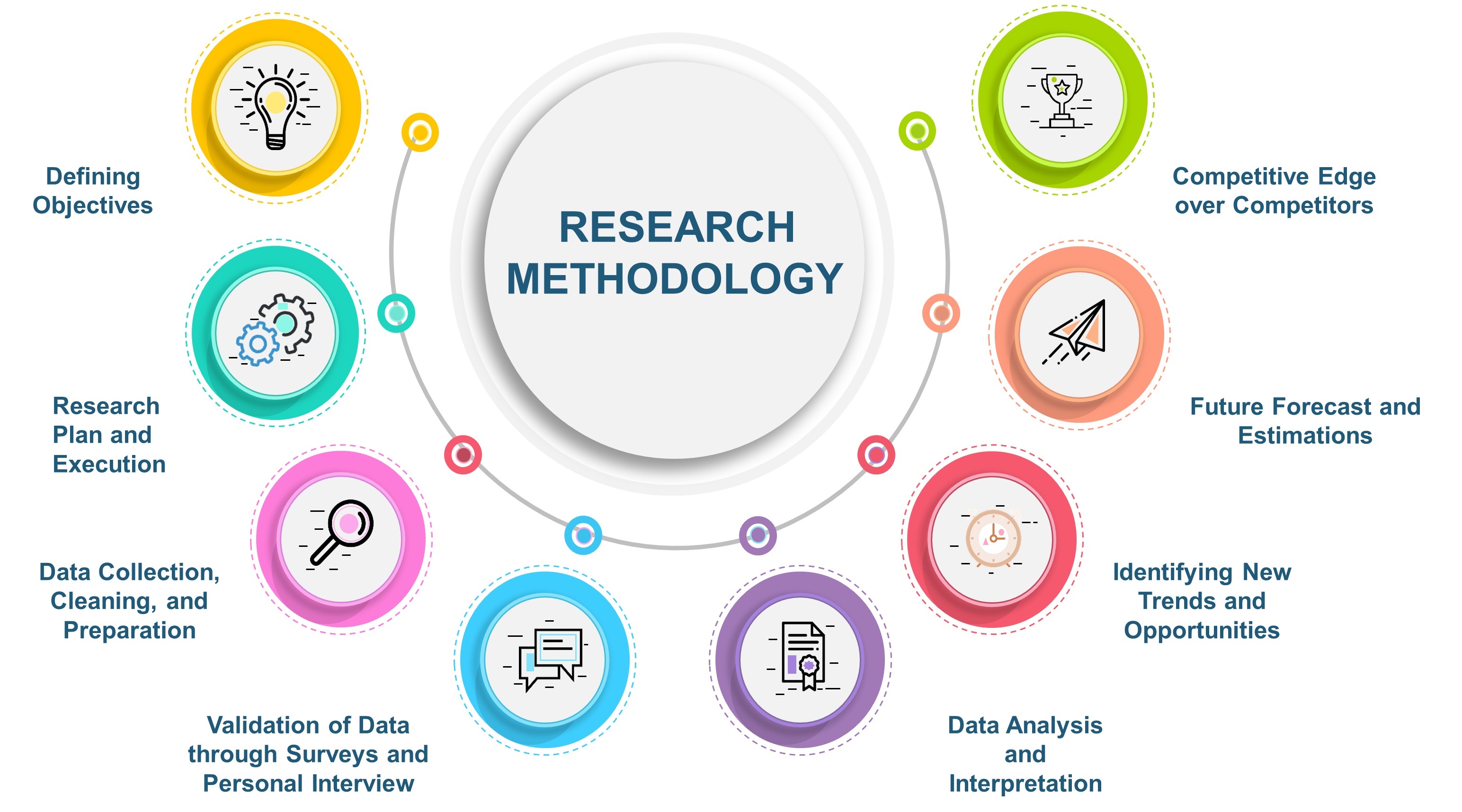
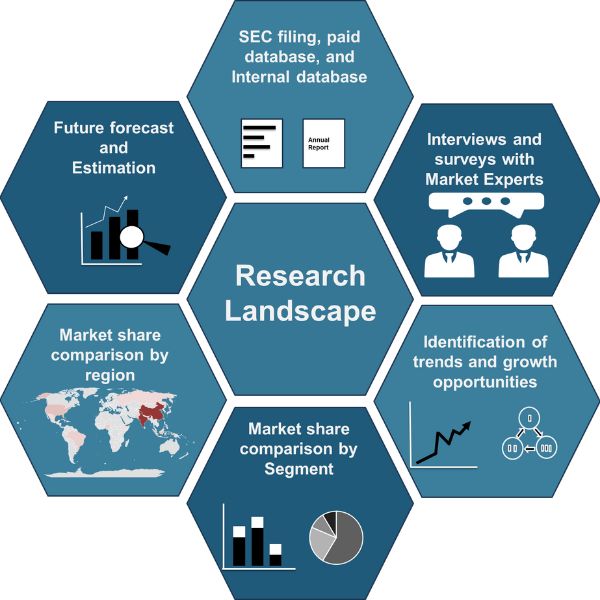
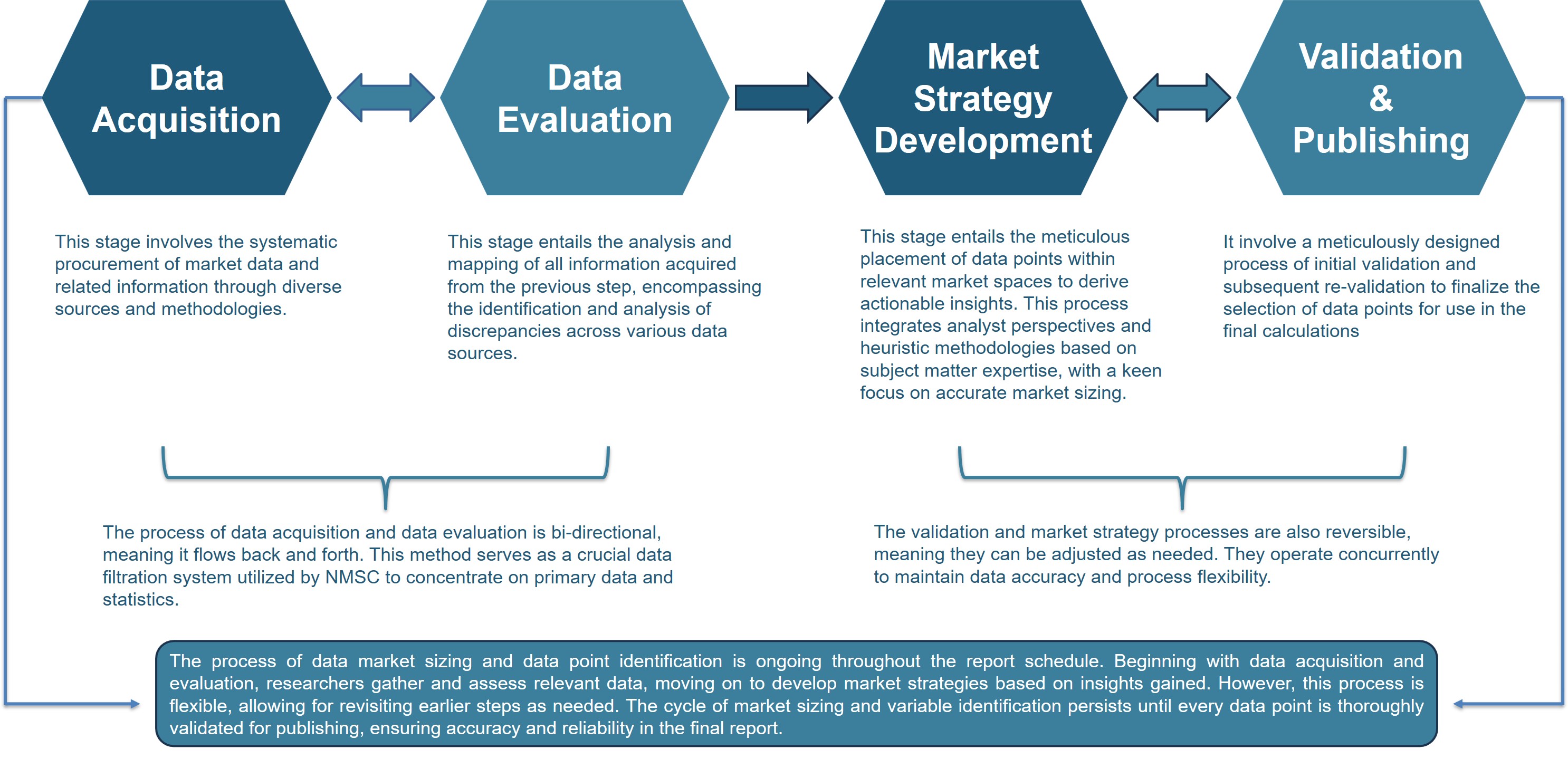




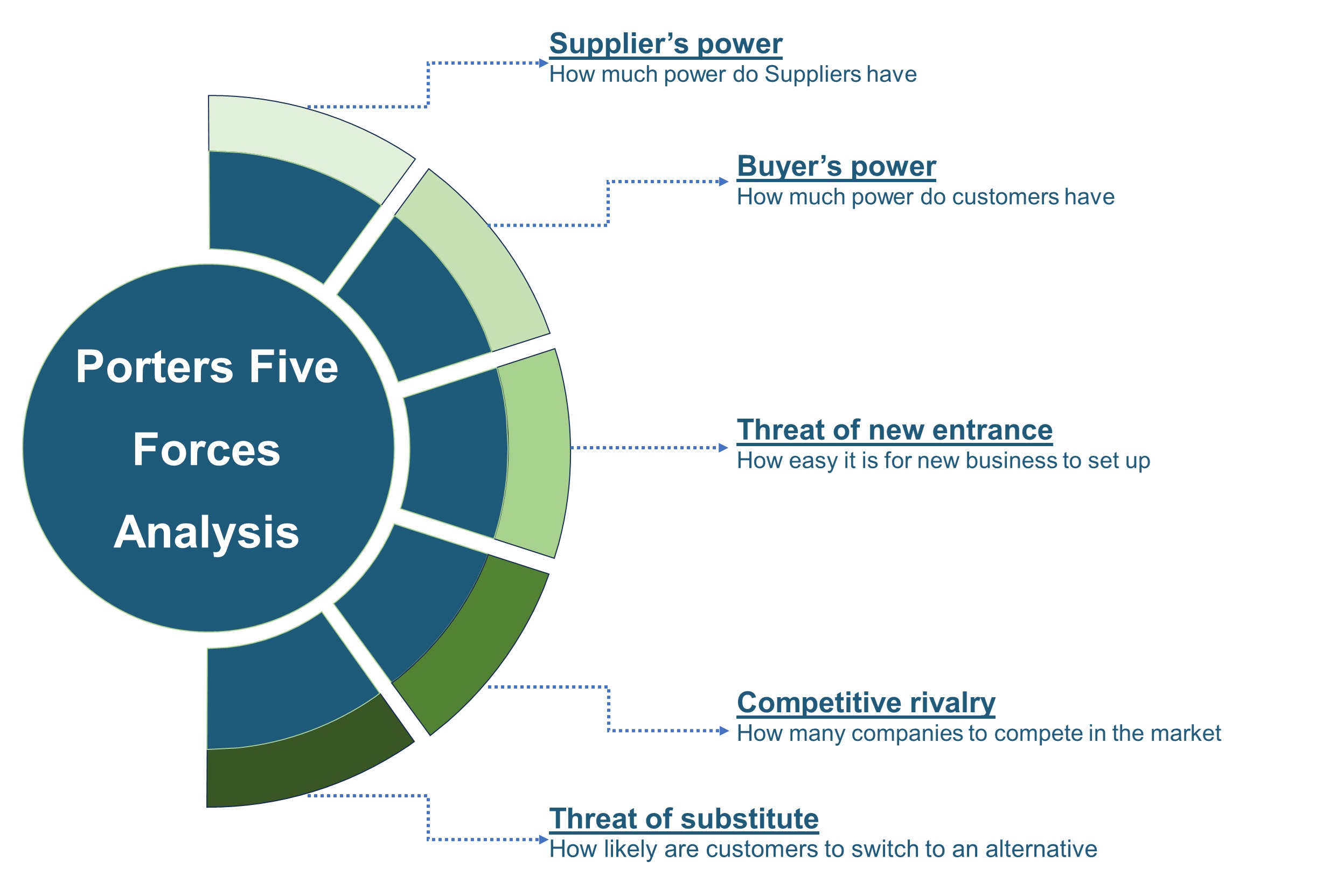







 Speak to Our Analyst
Speak to Our Analyst



